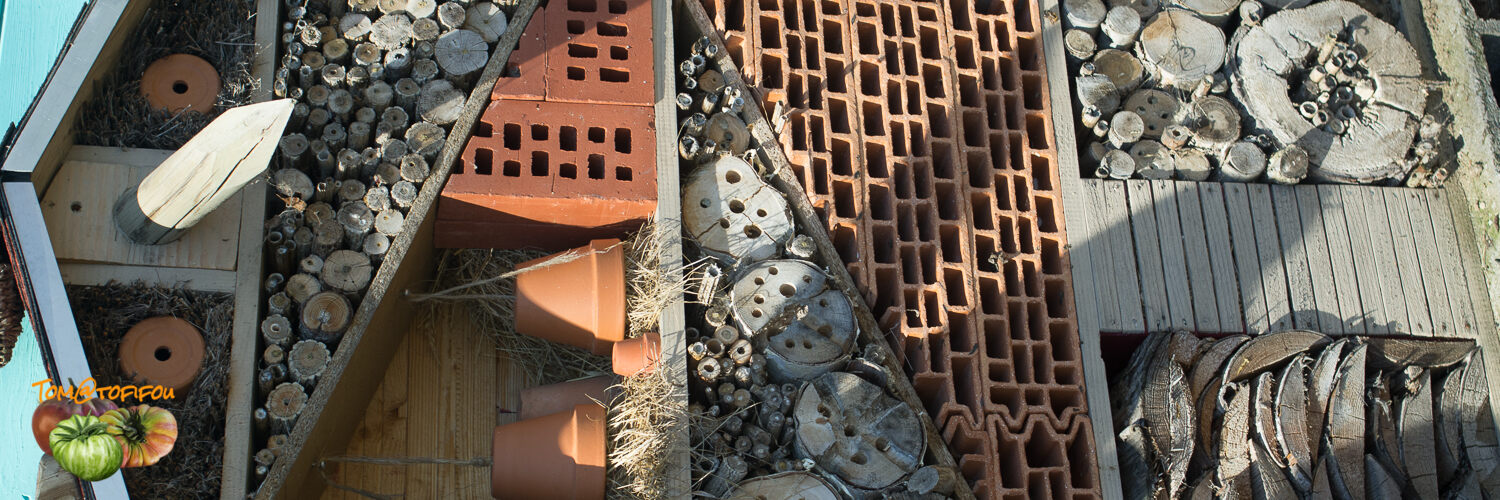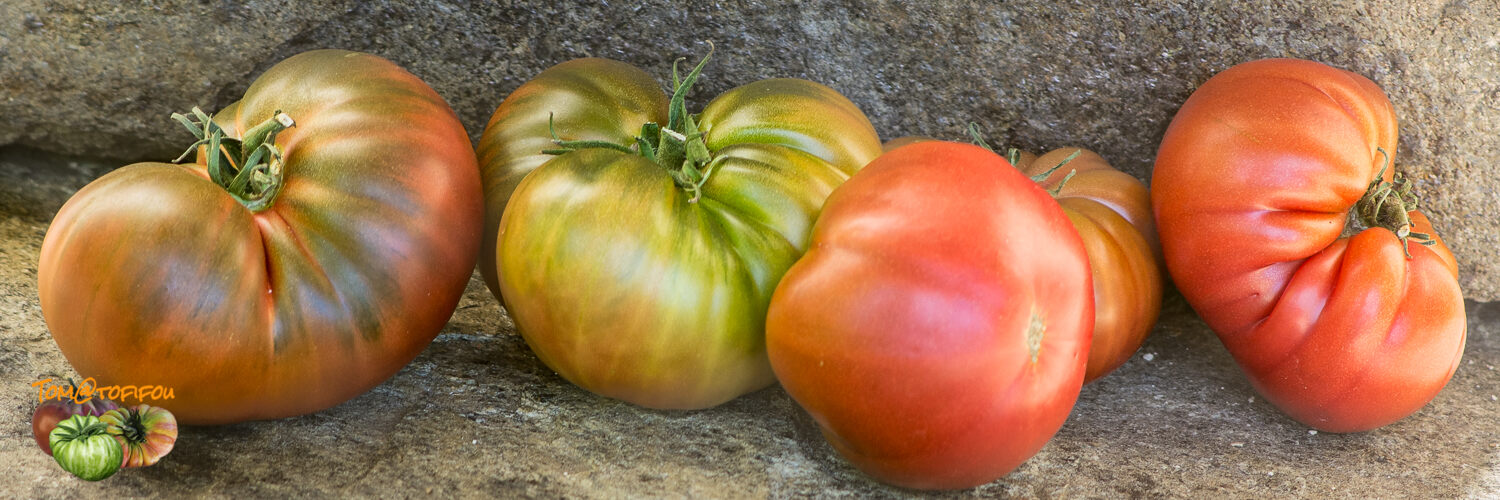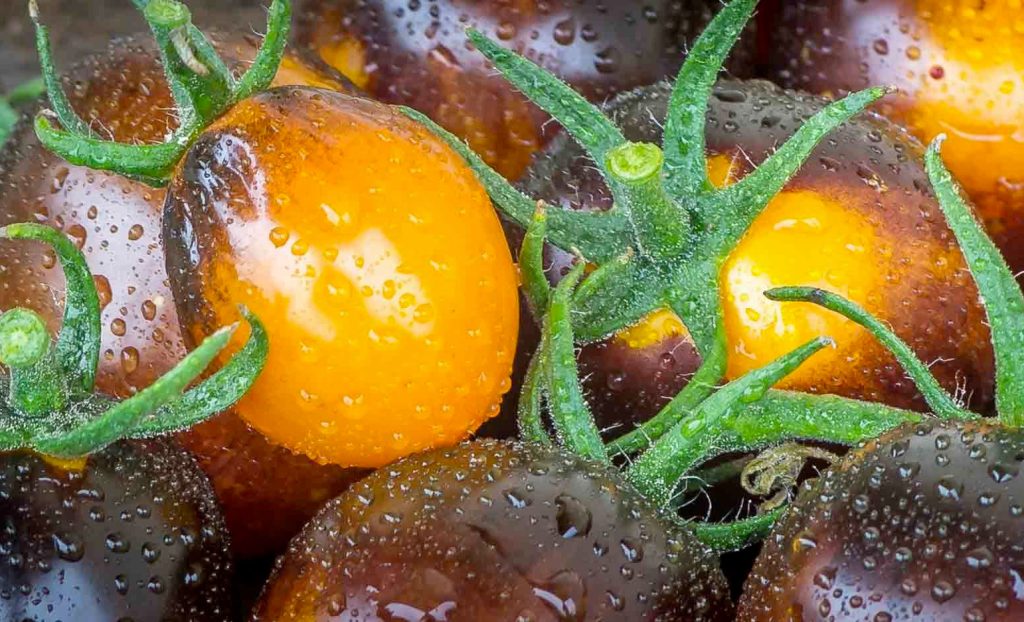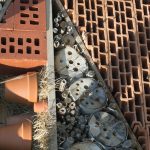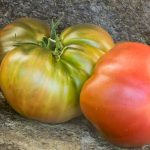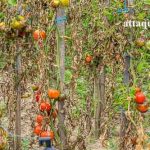
In this article we will review the main pests and diseases of tomato, how to identify them, how to prevent their attacks and as a last resort how to treat the affected plant. In general, we will note that tomatoes are sensitive to diseases that develop in humid weather, that it is imperative to practice crop rotation, to grow a wide range of varieties, to raise healthy and strong plants that have been hardened off. Regular leaf removal and disbudding will ensure good air circulation which will dry out the foliage more quickly. Avoid excess water (drip irrigation is ideal) and excess nitrogen fertilizer. Use healthy seeds, clean tools and stakes after each planting.
.In the case of tunnel cultivation good aeration is necessary for the prevention of any attack. It will also be seen that there are many preventive or curative remedies based on plant extracts which is an alternative to the use of polluting chemicals that are harmful to the microbial life of the soil.
Index
Cryptogamic Disease
Alternia
Alterniarosis or alternaria blight: the causative agent is Alternia solani, a fungal pathogen of the Pleosporaceae family. The favourable factors are dew and droplets caused by condensation. The fungus is preserved in the soil under plant debris in the form of mycelium and conidia. This disease can be transmitted by seed.
Alterniarosis or alternaria blight: the causative agent is Alternia solani, a fungal pathogen of the Pleosporaceae family. The favourable factors are dew and droplets caused by condensation. The fungus is preserved in the soil under plant debris in the form of mycelium and conidia. This disease can be transmitted by seed.
Control methods: use of resistant varieties, destruction of tops of previous crops, crop rotation, aeration in the case of a tunnel crop, chemical treatment, fungicides and biological control using the agent Bacillus subtilis.
Anthracnose. Colletotrichum spp.
anthracnosis, also called coal disease, is due to different mushrooms including apiognomonia, Collectrichum, discuss, Gloeosporium, Glomerella, Gnomonia, Pseudopeziza. The pathogenic organization responsible for anthracnosis spends the winter in plant debris of plants, but it can also survive in the ground for a short period of time. Many common weeds and certain crops are asymptomatic hosts. The disease can also be transmitted by seeds.
Symptoms and damage: The lesions present on the leaves or fruits act as inoculum and spread the infection . on the Fruits, symptoms are small round spots, hollow, oily appearance. The spots gradually grow by forming concentric rings, reaching 20 mm (3/4 in) in diameter. They blacken, and their center covers small black fungal structures. Anthracnosis lesions on the leaves go unnoticed. Infections can be triggered anytime, when the temperature is between 10 ° C and 30 ° C (50 - 86 ° F). The homes extend quickly during the prolonged periods of moisture of the leaves. Although symptoms are only manifested on ripe fruits, infection can start on green fruits. Fungicide treatments should start early enough to prevent fruit infection when it is still green. The rather slow evolution of stains and the presence of microsclerotes and acertevules on these make it possible to easily identify this yeast infection.
Control Measures: Practice a rotation of at least three years, free of crops in the solanaceous family. Eliminate weeds that may host the anthracnose fungus. Use treated or disease-free seed. Optimally timed fungicide sprays are effective in reducing the amount of loss this disease can cause.
Powdery mildew
Also called "powdery mildew disease", fungi belonging to the Erysiphaceae family are responsible for this disease. Unlike other fungi this one can proliferate in dry weather. In addition, a wide temperature range between day and night is an aggravating factor.
Symptoms and damage: appearance of yellow spots on the upper surface of the leaves and white down on the lower surface. A yellowing of the leaves which dry up and fall off. The young organs are primarily contaminated. Mineral malnutrition accentuates this disease. On the other hand it never appears on the fruits.
Control methods: The use of Horsetail slurry, containing silica, or an infusion of garlic with added milk (the latter serving as an adhesion adjuvant and also as an antifungal agent), allow for the suppression of powdery mildew while preserving the environment and soil fertility. Infusions or sprays of sulphur are still very effective in controlling this disease. Remove the basal leaves attacked by the disease, stimulate the growth by a nitrogenous contribution (nettle purin). In the case of crops grown in tunnels, it is necessary to ventilate as much as possible to avoid excessive heat. In a preventive way we can make a spray of water mixed with skimmed milk (10%) which will have the effect of eradicating powdery mildew, moreover this spray would strengthen the immune defenses of the plant.
Mildew
Also called "the black plague", is due to the Phytophthora fungus which spreads all the more easily when the atmospheric conditions are humid and mild, or even hot(15/27°). Note that the strain responsible for this disease varies from year to year.
Symptoms and damage: appearance of yellowish spots that turn brown rather quickly. On the underside of the leaves a grayish-white fuzz can be seen from which spores emerge. In general, the insertion points of the suckers, the leaves and the fruits are the first places affected. Leaves are affected first, then stems and finally fruit.
Means of control: prevention remains the most effective means of control.Indeed once the disease is diagnosed the infected plant is almost lost. It is necessary to plant feet that you will have sown or raised yourself by hardening them and strengthening the rooting by successive repotting. Mix varieties (early, late, disease resistant, with great development...) diversity being an asset for the non proliferation of an affected plant. Avoid excessive watering, thin out the leaves and bud regularly to facilitate air circulation between the plants. Mulching is also a good way to reduce humidity; a drip irrigation will allow you to water without wetting the leaves. As a preventive measure, the use of a homemade cocktail of plant extracts (fern/horset/consumption/nettle) will fortify the plant and make it more resistant to attacks. You can also spray with bicarbonate of soda, associated with black soap for a better grip on the foliage. The fermented extract of burdock (use dry leaves) diluted to 20% in spraying, repeated 3 times at 10 days interval is also very effective. The use of "bouillie bordelaise" (Bordeaux mixture), very common in the past, is not recommended because this solution is polluting in the long term (heavy metals). Indeed, the copper that composes it does not decompose in the soil and is even harmful for the life of soil micro-organisms.



Botytris
Also called "gray mold", is an ascomycete fungus of the Sclerotiniaceae family. It is an aerial disease mainly observed in crops under cover. The factors favorable to its development are an excessive hygrometry and a high density of plantation which favors the germination of the spores of this fungus. The climatic or fertilization shocks are also favorable vectors. It is also a wound parasite.
Symptoms and damage: The main symptoms Gray mold are spectral tasks on the fruit and, sometimes, the rot of this last. These tasks are in the form of pale halos or rings with a small black brown point in the center. The fungus forms a gray and fluffy sporulation on the leaves, stems, faded flowers or fruits. The infection first appears on the leaves that are in contact with the ground, or on the damaged leaves and flowers. The infection can completely belt the reached stems. High humidity conditions that extend are favorable to gray mold. The fungus can be present throughout the season, but its main symptoms are manifested during fruit putting. It is not very common, except in very humid seasons, and generally does not cause serious damage.
Control methods: avoid infected land, excessive nitrogen inputs and excess water and moisture. Remove diseased plants plant resistant varieties. Avoid tissue injury during pruning and disbudding.
Bacterial Diseases
Bacterial canker
This disease is caused by the bacteria clavibacter michiganensis. The bacterial chancre can follow a primary (systemic) infection or a secondary infection (foliar) and manifests in a range of symptoms.
Primary infections are attributable to infected seeds or to the invasion by bacteria of the vascular tissues of the seedlings. Symptoms, which sometimes only manifest several weeks after infection, begin with the wilting of the lower leaves that roll up downwards. In general, the wilting gradually gains in height, unless the point of infection is at the top of the plant. It is common for the leaves or the plant to be withered only on one side of the sheet or plant. Sometimes the plants collapse and die, especially if the infection occurs in the early stages of growth. In general, the plants survive, but are stunted and have a part or all the symptoms described above, according to the environment and the growth stage.
Infections propagate by water splashes, rain pushed by wind and water into thin droplets or aerosol accompanying intense rain episodes. The critical period is the raising to the harvest. The propagation of the disease is favored by a warm and humid weather, with temperatures of 24 to 32 ° C
Symptoms and damage: tomato sheets that are infected with the body responsible for bacterial chancre have characteristic black people, without other stains on the limb , if not, sometimes, a narrow yellow listed between necrotic perpetrators and healthy tissues. Longitudinally cut, the infected stems can have a pale brown coloring especially perceptible to the nodes and just above the collar. As the disease progresses, the shade becomes reddish brown. The exterior of the rod can be covered with light streaks. These streaks can rush and train cannons by opening. When the infections are severe, yellow oozing can exude stems when pressing them after cutting them.
On the fruit may appear relatively small ocellated spots. These spots have a light brown center and are usually surrounded by an oily-looking white aureole (3 - 6 mm in diameter). In the case of bacterial canker lesions, the white aureole normally remains visible on the ripe fruit, while in the case of bacterial spot, the aureole disappears with time. Bacterial canker can also cause blackening of the vascular tissue inside the fruit. The fruit is sometimes punctuated with black spots along the vascular bundles under the calyx. Bacterial canker bacteria can grow in the vascular bundles inside the fruit and spread to the seeds. This results in visible yellowish streaks from the stem to the seeds and internal seed infections.
Control methods: there is no effective curative treatment, only preventive treatments can limit the appearance or spread of the disease. Use of healthy seeds, disinfection of greenhouses, elimination of infected plants, crop rotation. Choice of resistant varieties and promote diversity in the choice of varieties.
Tomato Fly Species
Bacterial spot is caused by Pseudomonas syringae pv. tomato. This bacterium produces a number of compounds that promote infection and draw nutrients from the tomato plant. One of these compounds is coronatine, a plant-specific toxin that is responsible for the yellow halo surrounding leaf lesions and stunted seedlings. Bacterial speck favors cooler weather, 18-24°C. It is favored by abundant rainfall and high relative humidity. Multiplication of organisms is inhibited when average daytime temperatures are above 21°C
Symptoms and damage: On the foliage, appearance of black spots with irregular outline surrounded by a yellowish halo. These spots can join and form a dark brown necrotic patch. The leaflets dry up and fall. If the attack is early, it will cause an important flower drop. Only green fruits less than 3 cm in diameter are susceptible to infection by the agent responsible for bacterial speck. On the fruit, the disease is manifested by the appearance of small black spots (less than 1-3 mm), slightly raised and often surrounded by a fine halo ranging from green to yellow. The lesions, usually superficial, can be detached with the nail. Once the fruits are red, they are no longer vulnerable to infection, as they are then devoid of bristles. The bristles break off and provide an entry point for the bacteria. On already infected fruit, black lesions appear after ripening.
Control methods: there is no curative treatment. It will be necessary to carry out a preventive treatment with copper, favor crop rotation (every 2 years), disinfect stakes, avoid excess water and excessive nitrogen inputs. Experiments have shown that if the onset of a bacterial disease can be delayed until after the main fruit set, the crop will be very little affected. Once the aerial parts are fully developed, a low incidence of bacterial disease on the foliage will be tolerated.
Bacterial scabies or bacterial spot
This disease is caused by the bacterium Xanthomonas campestris, which can produce lesions on all above-ground parts of the plant (leaves, stems, flowers, and fruit). It is difficult, relying solely on the visible signs of the disease, to distinguish bacterial spot from bacterial speck with certainty, especially in its early manifestations. The main source of inoculum would be infected seeds and crop residues. Like the bacterial spot agent, inoculum may also be present on tomato regrowth and contaminated surfaces (machinery, racks, greenhouse structures, tools). The spread of bacteria is primarily attributable to water splash, wind-driven rain droplets, or mists accompanying rain events.
.Symptoms and damage: the symptoms are much the same as those described for Tomato Leaf Spot. Bacterial spot first appears as small, greasy, translucent lesions appearing randomly on leaflets causing circular black spots 3-5 mm in size sometimes haloed by a yellow halo. Infected leaves may appear scorched. When the spots are numerous, the foliage turns yellow and eventually dies, resulting in defoliation of the lower part of the plant. The initial infection occurs only on green fruit. This is because the disease is transmitted through the silks of the fruit, which the fruit no longer has when ripe. The disease appears on the fruit as small raised spots ranging from dark brown to black. These spots are sometimes surrounded by a white halo that makes them look like the ocellated (eye-shaped) spots characteristic of bacterial canker. As the fruit ages, the white halos disappear. Bacterial spot lesions grow to 4 to 6 mm in diameter. They turn brown and oily and sometimes crust over. These lesions can be compared to damage caused by hailstones.
Control methods: as with other bacterial diseases it is very difficult to control once the disease is declared; preventive action is needed as with other bacterial diseases.
Black pith
This disease is caused by the bacterium Pseudomonas corrugata
Symptoms and damage: affected plants show dark spots on stems, petioles and peduncles. A longitudinal section of the stem shows a black pith filled with vacuoles, it may also hollow out and retract to form several cavities. The vessels remain intact unlike in vascular disease.
.Means of control: same as for other bacterial diseases.
Viruses (TYLCV)
Tomato Yellow Leaf Curl Virus or Yellow Leaf Disease in the tomato. Viral disease caused by Begomovirus viruses; It is transmitted exclusively by the aurode bemisia tobacaci commonly known as white fly. It lays eggs which are inserted into the tissues by a pedicel which allows the exchanges of water with the sheet. The larvae are on the underside of the leaves.
Symptoms and damage: growth impairment, yellowing of petioles. Numerous small chlorotic spots on the underside of leaves. The larva sucks sap and secretes a honeydew that promotes the appearance of fumagin (composed of several saprocyte fungi) which alters the physiological functions of plants.
Wrestling means: eliminate infected plants. Eliminate primary (eggs) and secondary (larvae) sources from the virus. Well weeding the surroundings of the plants (adventitas and abandoned Pantes are refuges for the Atlerodes). Implementation of yellow panels stuck that will serve as traps and indicate the presence of the Aleurode. Use of the predator of bemisia tobacaci: macrolophus caliginosus. In organic culture you can use insecticide remedies, to fight against white fly, such as a maceration of fresh street leaves (80 g/l of water to be diluted at 20%) in vaporization and/or a decoction of a con -out leaf.
Nématodes
Nématodes or circles constitute a branch of non-segmented worms. They are covered with a thick cuticle, they have a complete digestive tube, that is to say a mouth and an anus. They reduce the capacity of plants to absorb nutrients and water necessary for their growth. They prefer dry and light floors as well as high temperatures (between 17 and 27 °), their larvae are easily killed by frost, the problem is usually important in grip culture and areas not affected by frost .
Symptoms and damage: appearance of Wales or Nudoses on roots of the attacked plants. The stem revives, the leaves turn yellow, then the plant dumb.
Wrestling means: because of their great resistance and their physiological variability It is very difficult to fight them. Avoid infected soils, the use of nematicides although effective remain very polluting and harmful for microbial life on the soil. Use resistant varieties or resistant rootstocks. Recently studies have been developed on "predators" mushrooms which trap and capture nematodes and feed on it: nematophagous mushrooms with adhesive spores which stick to the body of the nematode and "ovicide" mushrooms which have the property to kill the eggs of the nematodes.
Insects and Pests
Mites
They are members of the phylum Arthropoda and belong to the class Arachnida. Tetranychus urticae is the most common mite on tomato crops. Also called the "weaver mite" because of the webs it forms on plants; it can be responsible for significant and lightning damage.
.Symptoms and damage: tiny chlorotic spots more or less scattered on the leaflet blade. The latter gradually turns yellow and takes on a dull hue. During severe attack some leaves may yellow, wilt and dry up. On the fruit, the skin becomes suberized and shows cracks.
.Means of control: avoid thirsting the plant by regular irrigation, ensure a good hoeing in order to eliminate the host plants. In organic culture and preventive uses repellent remedies based on decoction of horsetail or maceration of nettle leaves, spraying to be done regularly. In curative we use a decoction of garlic (70 g / l of water, to dilute to 30%, treat 3 times at 3 days interval).

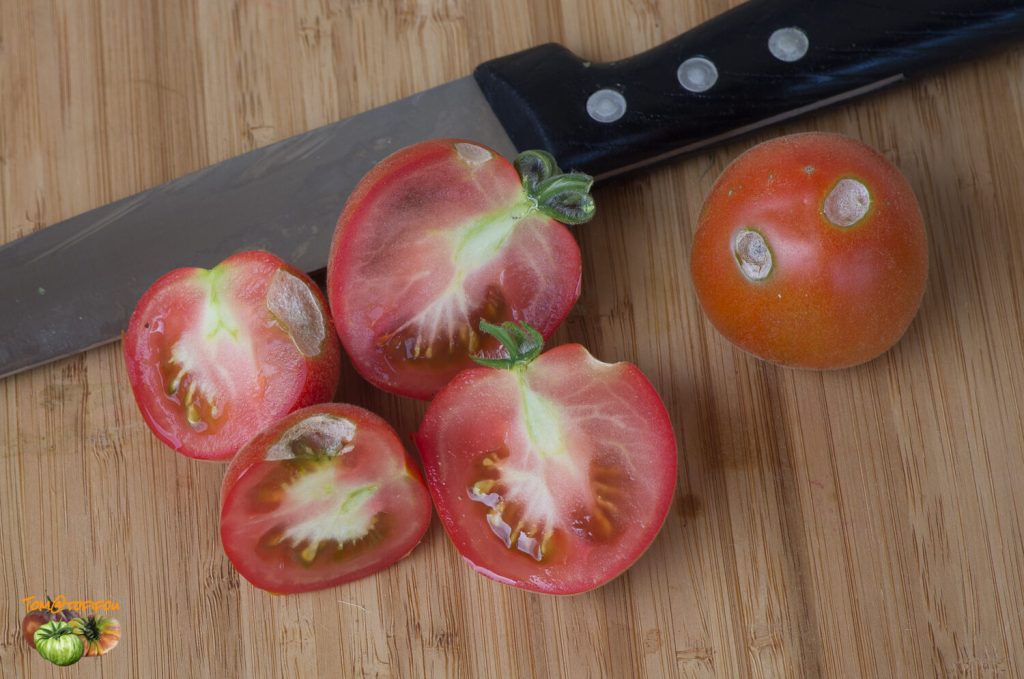
Noctuaries
Many species of lepidopterans in the family Noctuidae have the vernacular name Noctuidae in their imago (butterfly) form. They are basically moths. Many of these species are pests in their caterpillar form.
.Tomato leafminer or Armiger
helicoverpa armigera is also called night butterfly . It is in the state of larva that they cause the most damage. It is active at night in the morning early and early in the evening, it hides in the superficial layer of the ground. It is one of the most polyphagous species among pests.
Symptoms and damages: the young caterpillars devour the collar and lead to the death of the plant. On the fruit, the larvae dig galleries which evolve into rot, then a premature fall of the attacked fruits.
Control methods: install pheromone traps, use beneficials, Bacillus thuringiensis (micro organisms)
-Cabbage looper - Trichoplusia ni
Adults of the false sloth are moths that are mottled grayish brown. Their forewings have a distinctive silver "figure 8" pattern, and a small tuft of hairs rises from the back of the head. Wings are up to 3.8 cm long. The eggs are very small, round, greenish-white and occur in small clusters on the lower leaf margins. The larvae of the cabbage looper are pale green with a white stripe on each side of the body and two discrete lines down the middle of the back. Since their legs are located at the front and back of the body, they move in a very characteristic looping fashion. The larvae of the false looper are about 4 cm long. In the pupal stage, they are initially pale green inside a loose cocoon and become darker with time. Its period of activity begins, usually only after mid-July.
.Symptoms and damage: the false looper attacks the foliage of tomato plants, which it shreds in an irregular pattern. It rarely attacks the fruit, but it can enter the fruit if the fruit has already been pierced by other insects. The loopers can attach their cocoon to the tomato. Tomato plants can tolerate about 25% defoliation by the loopers without significant yield loss.
.-Vers-gris noirs - Agrotis ipsilon-Black cutworms - Agrotis ipsilon
The larvae have a soft and flat body and wrap themselves when they are disturbed. The hasty worms attack the seedlings, usually by cutting them at ground level or below. A single grayworm can destroy several seedlings.
The black ver-gray is a uniform color that goes from gray to black and has an oily appearance. The worm verses are mainly attacked in the vegetables that have just raised, at the start of the season, and still young plants. Adults are attracted to dense vegetation to lay their eggs. As soon as the blossoms, the larvae start to eat. Black verses are therefore more frequent in the fields with green coverage in early spring, before spring plowing. The critical period corresponds to the time of the season when the transplanted plants are young and small.
-Variegated cutworm - Peridroma saucia
The larvae of the variegated cutworm have soft, flat bodies and curl up when disturbed. The variegated cutworm appears later in the season and attacks tomato foliage. The cutworms' punctures on the foliage are scattered, especially around the edges of the leaves. Cutworms may only slightly puncture the surface of the fruit or they may make deep holes in the fruit. Secondary microorganisms can then invade the damaged fruit. Their period of activity begins in July. The worms feed mostly at night. During the day, they are sometimes found rolled up in the damaged fruit or in the soil around the plant. They are also occasionally seen during the day on the plant itself when foliage is very abundant.



Sphinx of the tomato or sphinx of the tobacco
Manduca quinquemaculata (tomato sphinx) whose larva is a large, smooth green caterpillar. It is 8 cm long at the end of its development and on each side of its body there are 7 (tobacco sphinx) or 8 (tomato sphinx) V-shaped marks. Its posterior end is prolonged by a prominent "horn". These larvae are present from mid-summer until the end of summer.
.Symptoms and damage: the caterpillars devour the leaves, stems and fruits.
Control methods: Control measures are rarely required for this pest.
Physiological disorders
Apical necrosis
Apical necrosis (or Blossom end Rot) is 99% associated with fluctuations in plant water supply if not with calcium deficiency and high fruit load. It can be more pronounced at high nitrogen levels and when growth is rapid. The problem can come from a bad assimilation of the nutrients by the micro-organisms. The 2nd and 3rd clusters are often the most affected by this anomaly.
.Symptoms and damage: a watery, small, or light brown area appears at the apical end of the fruit while the fruit is still green or ripening. The lesion rapidly enlarges to ochre and takes on a parchment-like texture. Secondary fungi may colonize the damaged tissue. The lesion also becomes a gateway for soft rot organisms.
Control methods: contribution of nitrogen fertilizer based on nitrates and calcium (bone powder or even simply milk). Regular irrigation, timely disbudding and leaf removal. Improve the soil texture by adding one or two handfuls of sand at the foot of the tomatoes to increase the granulometry of the soil in order to drain and aerate it, thus facilitating the assimilation of nutrients by the micro-organisms. Stimulate this microbial life by adding fermented extract (nettle, comfrey). It is recommended to avoid deep tilling of the soil, which can cut the roots and reduce water absorption. An appropriate irrigation program will help regulate the circulation of water and calcium in the plant. Note that some tomato varieties are more susceptible to apical necrosis than others.



Bloat or Hollow Tomato
Symptoms and damage: the fruit assumes a triangular or heart-shaped form. A cross section reveals empty lodges, showing few seeds, the flesh is less thick. The puffiness is likely to appear especially at temperatures above 35°C (95°F) or below 13°C. Puffiness is related to poor pollination and can be caused by extreme temperatures, inadequate nutritional supply, extreme fluctuations in soil moisture, and genetic factors.
Means of control: fertilization of potassium fertilizer (comfrey extract), on the other hand avoid any contribution of nitrogenous fertilizer. Regular irrigation.
Growth cracks, splitting, bursting
Growth cracks are found at the tip of the stalk from where they spread concentrically. The cracks can appear in mature fruit that is still green until the stage when it reaches full maturity, depending on the tomato variety. Tomato susceptibility to growth cracks varies by cultivar.
Symptoms and damage: as the fruit grows, there are cracks in the collar that can evolve, if conditions become favorable, into circular or radial splitting. Growth cracks can be caused by disturbances in the growth rate or variations in humidity and temperature conditions.
.Control methods: avoid the jerks of culture: regular irrigation, rational fertilization, aeration for the cultures under tunnel. Favored resistant varieties.
Blotchy-ripening or staining defects
Yellow collar: The upper part of the fruit does not ripen well. The flesh on the collar remains green or turns yellow. Sometimes only a ring of tissue (eye-shaped) is affected around the peduncular scar as well. Susceptibility to these disorders depends in part on the variety. It is also believed that soil potassium and magnesium levels may play a role in the development of this disorder. The disorder manifests itself well before fruit ripening and affected areas will not ripen even if harvest is delayed.
White flesh: While on the outside the tomato is red, the flesh of affected fruit is white and hard at the neck and sometimes toward the inside of the fruit. This disorder is believed to be a variant of yellow neck.
Plaque Ripening: The fruit has green, yellow and red mottling. Inside the fruit are large, hard, grayish to yellowish patches of flesh that fail to ripen. When the tomato is cut, brown bands of vascular tissue can be seen. These symptoms are also referred to as "immature spots". Viral infections can also cause similar symptoms. Boron or potassium deficiency, excess nitrogen, high humidity, temperature variations, very wet or compacted soils can cause patchy ripening.
Control methods: avoid excess nitrogen, excess water, practice good leaf removal and disbudding especially for varieties with high foliage density.
Cat face and longitudinal scar
These disorders are both linked to environmental conditions during the development of flower or pollination. The "cat face" is usually observed on the first tomatoes in large fruit varieties. Temperatures below 15 ° C during flowering are conducive to the appearance of these faults. High concentrations of nitrogen and excessive size can also trigger these symptoms.
The appearance of a longitudinal scar is associated with a pollination problem, when it occurs at extreme temperatures or under high humidity conditions. The scar is reminiscent of a zipper and actually has a series of fine linear scars that extend, all along or in part, from the end of the fruit peduncle to the apical end. Owls sometimes appear in the fruit along the scar.

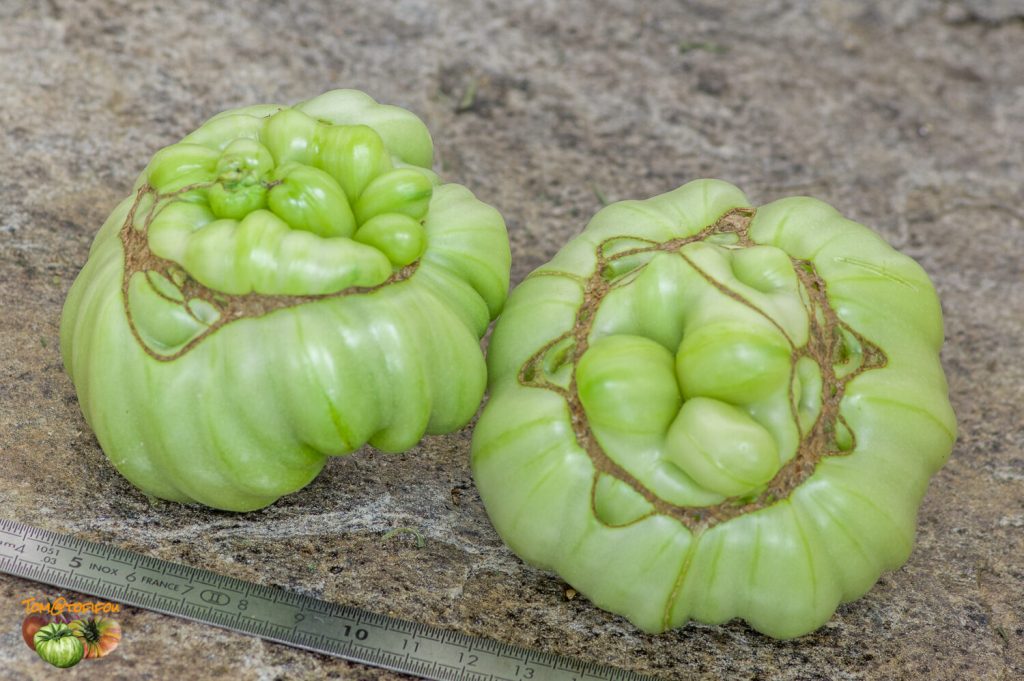

Leaf winding
Leaf winding in tomatoes usually occurs in hot and dry weather or when the floor becomes water. Damage to the roots can also cause the leaves winding. Their ends are wrapped up and inward and their texture becomes fibrous.
Some cultivars are predisposed to leaf curl, which actually appears to be a mechanism for conserving moisture and occurs permanently. This defect does not appear to compromise the yield of tomato plants.
Insulation
Sunstroke can affect leaves, stems and fruit. A fruit that is suddenly exposed to the sun, following defoliation of the plant, especially in hot, humid weather, may show signs of sunstroke. Affected tissue is collapsed and is light brown to white. Fruits may be invaded by secondary organisms that may cause them to rot. Early in the season, young shoots and stems may also be damaged.
Exposure to intense sunlight can also increase the temperature inside the fruit to the point where it fails to blush. In this case, the tissue exposed to the sun will turn yellow.
Runoff
The flowers on tomato plants will fade and turn brown or the flower stalk and calyx will turn yellow and the flower will fall off. Berries may also fall off the plant. Blossom drop can be caused by various types of stresses, such as temperatures above 32°C or below 10°C, high relative humidity, high winds, nutritional deficiency, disease or insect damage.
Some varieties are less susceptible than others to run-out or excessive temperatures.
An essential book to get to know the subject better: Les maladies de la tomate by Dominique Blancard

